Online learning continues to grow in popularity. In fact, the global market is expected to reach a whopping 650 billion dollars by 2030. This is thanks, in large part, to evolving technology and new eLearning standards, like xAPI.
To make all this investment worthwhile, organisations need to ensure their training makes the impact they intend it to make. After all, training needs to be effective to create results.
There are several technical specifications that help you to deliver training through your digital learning tools. Today, we’ll be exploring the aforementioned xAPI — one of the newest and fastest-growing standards in the market.
Let’s jump right in and start with a definition!
What is xAPI?
xAPI, also known as Experience API and Tin Can API, is a technical specification for learning technology solutions.
xAPI entered the online learning world in 2013 when it was developed as part of an ADL initiative. The project was initially called ‘Project Tin Can’, but the final output was later officially named Experience API. Eventually, the name was shortened to xAPI.
The intention was to capture learners’ true experiences, regardless of the device or platform learners used to learn. As such, it addresses problems that older standards couldn’t overcome and captures experiences both online and offline.
In fact, xAPI is a simple and more flexible technical specification than its counterparts. It captures information in a consistent format by securely communicating with different systems to track, record and share data.
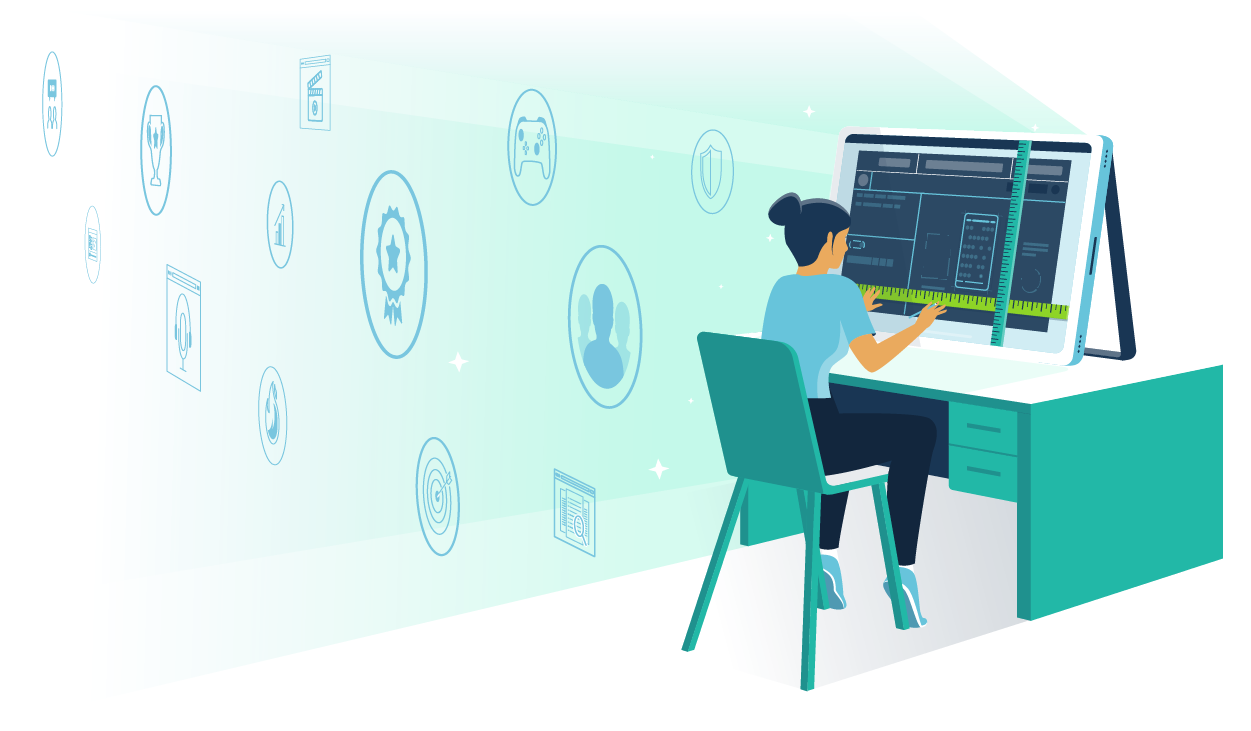 This, in turn, opens doors to capturing experiences like never before. Think about mobile learning, simulations, virtual worlds, serious games, real-world activities, experiential learning or social learning.
This, in turn, opens doors to capturing experiences like never before. Think about mobile learning, simulations, virtual worlds, serious games, real-world activities, experiential learning or social learning.
These experiences previously existed just outside of our reach. They couldn’t be tracked, which meant they had no role to play in a formal learning programme. But that’s not the case anymore, and it’s all thanks to xAPI.
To better understand the specification and how it works, let’s explore where xAPI came from.
The History of xAPI
We mentioned Project Tin Can briefly in the last section. The project started in 2010 when Advanced Distributed Learning (ADL) issued a Broad Agency Announcement (BAA) asking for assistance in improving the SCORM specification.
The ADL is sponsored by the United States Department of Defense. They created SCORM back in 2000 to help address common eLearning challenges, such as interoperability, reusability and tracking.
However, by 2010, they recognised the need for a more capable eLearning specification. After all, at this point, SCORM was more than 10 years old.
The BAA was awarded to Rustici Software who were also familiar with SCORM. This gave them a good foundation for modernising the previous standard.
Project Tin Can started as an in-depth research project for Rustici Software to collect feedback and understand what a modern online learning standard should look like. The team got to work and announced the release of Tin Can API 0.9 in 2012.
Version 1.0 was then released in April 2013, and it has been updated throughout the years. Now, xAPI has a significant influence on the eLearning industry.
How Does xAPI work?
We have continuous opportunities for learning, whether that’s by interacting with others, reading advertisements, exploring content or simply observing our surroundings. As such, xAPI was created to capture learning interactions in a wider variety than ever before.
Experience API is based on a simple structure of statements. These statements describe the learning activity by consisting of a subject (who), verb (did what), and object (what).
For instance, your statement could read, ‘I completed a quiz on the neuroscience of memory.’
As such, the basic xAPI statement answers the question, “who did what on what learning activity?”. However, there are near unlimited possibilities for customising these statements to specific requirements.
In fact, your xAPI statements can also include other information in addition to the subject, verb and object. This additional data is known as context and extensions.
Context, for instance, could include the date and time of the learning activity. Extensions, on the other hand, could include the score achieved in an assessment.
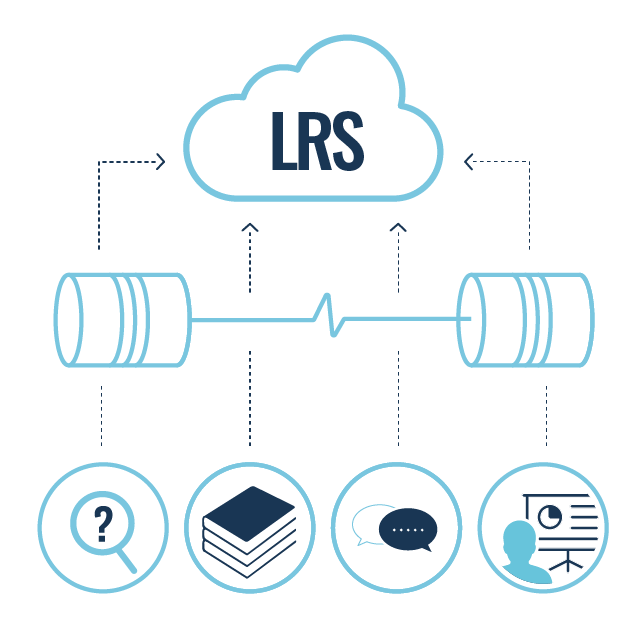
So, how does this work in practice? xAPI statements are created in your activity provider. This is typically your learning management system (LMS), learning app or course. Your tool then sends the statements forward to a learning record store (LRS).
An LRS is a database that stores all your statements related to an individual’s learning experiences, regardless of the source. This makes it the centrepiece of every xAPI ecosystem. You can host your LRS locally or in the cloud.
The whole role of an LRS is to receive and store statements and offer learning analytics and reports. Ultimately, it’s simply a database for learning activities.
The statements can be sent in real time while the learning action is happening or at a later point when the internet connection is restored. This allows you to track training that happens offline too.
The Benefits of xAPI
Tin Can API comes with many benefits. Let’s explore some of the most important ones:
1. Better Understanding of Learning Impact
As explored, xAPI tracks data from multiple sources. This added flexibility means that organisations get a better understanding of the results of their training programme.
As a result, you can build a clearer picture of what learning is happening in your organisation and how your training programme impacts your company. This, in turn, helps you to design better training initiatives.
After all, you can now track all kinds of experiential data. It then becomes easier to plan your future training programmes as you know what works with your audience.
In fact, user behaviour data, like chosen device, physical location, total time spent, button clicks and so on, help you to understand how your learners operate your LMS. Similarly, you can understand their needs much better.
Ultimately, it helps you to draft a clear roadmap of where to invest your training budget to bring the best ROI. In fact, better data enables you to create actionable goals to improve your training initiatives.
2. Seamless Integrations

At its heart, Tin Can API is an interoperability specification. This means that it allows two or more learning technologies to talk to one another.
Typically, integrating systems is time-consuming and costly. By relying on xAPI, the process becomes considerably faster and cheaper. This even includes data migration from your old learning systems to new ones.
As a result, you can improve your learning technology solutions and remove any challenging processes or limitations.
3. Scalable
The seamless integrations we mentioned above also mean that xAPI offers connectivity between all your learning programmes and software. As a result, you and your learners can access training from a single portal.
This flexibility helps you to build your training programme into an organisation-wide and globally used tool. As such, scaling your training becomes easier than ever.
4. More Reliable
xAPI has fewer chances of error than SCORM. In fact, it’s a well-built, robust online learning standard that has practical applications in day-to-day use.
This means you can save time that would otherwise be spent resolving problems related to your content or learning management system. In turn, this allows you to concentrate on creating a training programme that delivers measurable results.
5. Better Reports
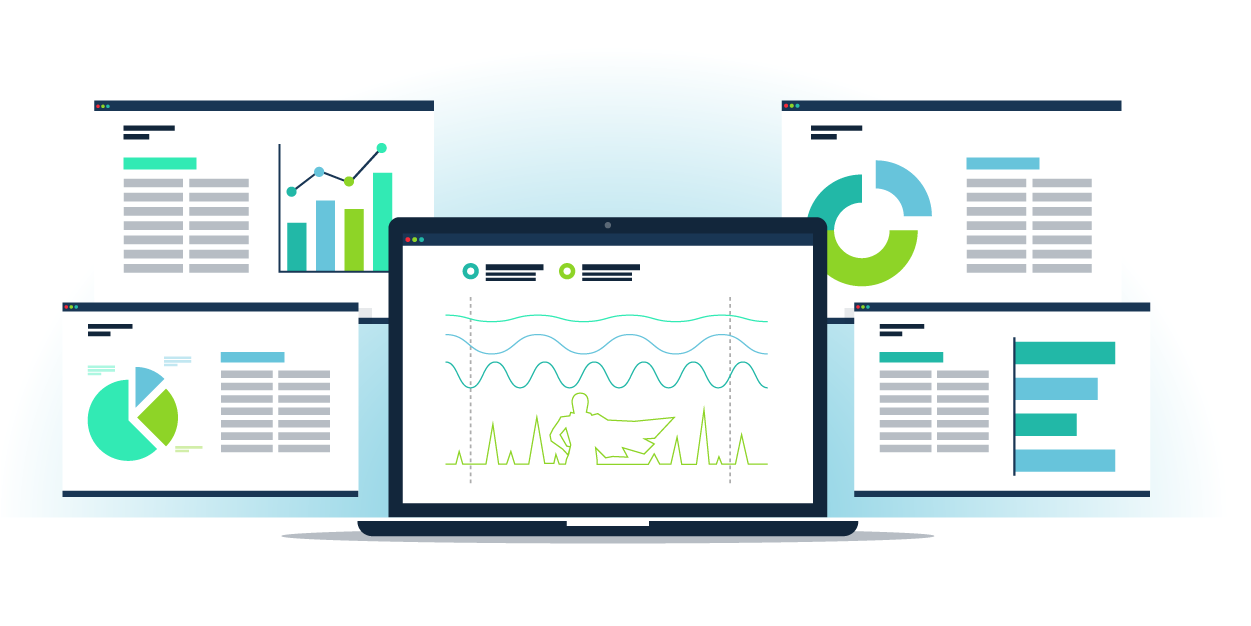 xAPI gathers more data than its preceding technical standards. With this in mind, it only makes sense that you can also enjoy better reporting.
xAPI gathers more data than its preceding technical standards. With this in mind, it only makes sense that you can also enjoy better reporting.
Reporting is an essential part of any online training programme. After all, it’s the only way for you to understand how well your training initiative is meeting the needs of your learners and organisation.
xAPI means that you can integrate your data into your chosen reporting tools. However, most LMSs and LRSs provide built-in reporting that helps you to gauge your learners’ performance. As a result, you can create customised, in-depth reports effectively.
6. Personalised Learning Experience
Experience API gives you more in-depth insights into the user experience. As a result, you can find and fix any UI issues, tackle skills gaps and create more personalised learning experiences.
In fact, this in-depth data can help you to show relevant recommendations to learners based on their performance and activity.
7. Offers Multi-Device Support
Unlike most standards, xAPI allows you to capture learning experiences across multiple platforms and devices. This includes computers, smartphones or tablets. This enables the standard to collect data from various sources.
This makes a big difference. After all, multi-device support allows you to design training programmes that take user experience and preferences into account.
8. Supports Offline Learning
xAPI enables learners to learn offline without losing their progress or data.
In fact, xAPI compatible eLearning content synchronises with the server and allows learners to access course materials and activities while being offline. The user’s experiences will be uploaded to the LRS once they are connected to the internet again.
This, in turn, increases accessibility. After all, learners can access their training at a time that’s convenient for them.
Alternatives to xAPI
xAPI has gained significant adoption. However, it has to compete with legacy eLearning standards, some of which are still popular today.
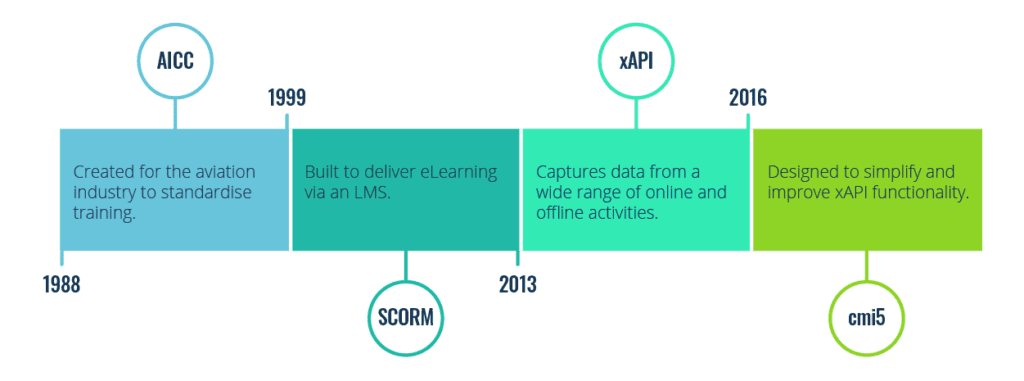
1. AICC
AICC, or Aviation Industry Computer-Based Training Committee, made waves in the industry back in the 1980s.
It was born when a group of aircraft manufacturers joined forces to create guidelines and specifications to address the rising costs of computing. After all, the aviation industry was at the cutting edge of online learning back in the day. They used digital tools to train their airline workers.
As a result, AICC helped to ensure that the computer-based training tools used in training were interchangeable and compatible with other systems.
Even though their technical specifications and standards were updated and reviewed throughout the years, AICC soon started to show signs of age.
In 2010, the AICC announced they were working on a replacement standard to meet modern needs. This effort is what we now know as cmi5 (more on this below).
In December 2014, the AICC formally announced that it had dissolved. The standard is still used for legacy reasons, but it’s no longer supported or updated by the AICC.
Even still, components of the AICC technical specifications were later used in SCORM.
2. SCORM
SCORM stands for Shareable Content Object Reference Model. As with other standards, It provides a list of technical specifications for online learning content.
If all of your content meets these criteria, it becomes easier to provide a matching system to host and deliver your content. As such, ultimately, SCORM drives compatibility between content and learning platforms.
SCORM was born in 1999 out of the United States Department of Defense’s decision to standardise eLearning production. The ADL, who also started Project Tin Can, took on the challenge and developed SCORM.
Rather than using statements like xAPI, SCORM tells programmes how to write their code so that it plays nicely with other learning technology software. In fact, SCORM has three components:
- Content Packaging: learning units are saved and exported as a SCORM package that is a self-contained zip file.
- Runtime: The SCORM package gets uploaded into an LMS, which launches the course.
- Sequencing: The course has a sequence that controls how learners make progress.
SCORM soon became the standard in the online learning industry, and it’s still popular amongst organisations. Although it faces competition from xAPI, it remains the dominant standard in the marketplace.
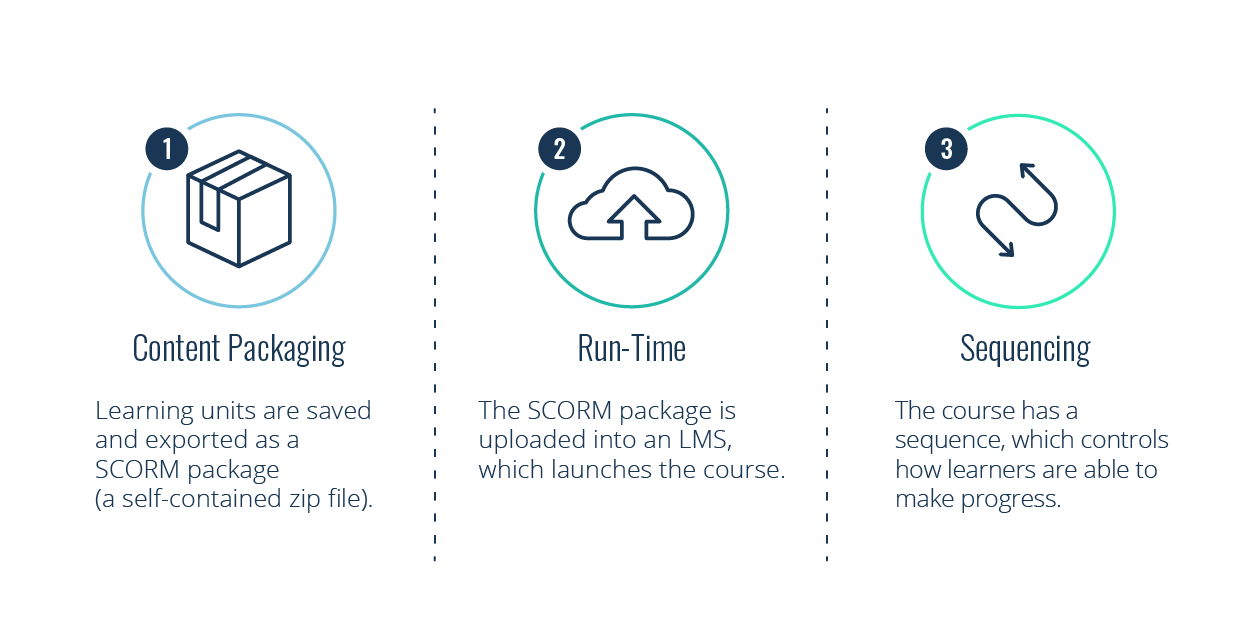
3. cmi5
cmi5, or computer-managed instruction, is the new kid on the block. It was released in 2016 to provide interoperability rules between xAPI content and an LMS.
With cmi5, you can ensure that your xAPI learning experiences are compatible with your LMS. In fact, cmi5 simplifies xAPI implementation by helping you to create xAPI-compliant content that fits right into your learning management system.
As such, cmi5 tackles one of the biggest downsides to xAPI: it’s not structured enough to govern what sort of content should go inside your LMS. Similarly, it’s more flexible and can record more data than SCORM and send it to an LRS.
Essentially, cmi5 can be seen as the lovechild of xAPI and SCORM. It takes the best parts of both to form a newer and more powerful specification.
What Is the Future of xAPI?
Technology continues to evolve. This means that the way we learn and develop our skills will also continue to change and adapt to new technological innovations.
xAPI is in a strong position to support this technological growth. It already enables you to gather data from a wide range of sources and provides greater control and flexibility over the data you collect.
As more organisations embrace xAPI, there is the potential for even better data sharing and interoperability between different learning technology solutions. This, in turn, could result in more personalised and effective learning experiences.
Moreover, xAPI has the potential to expand into other areas beyond traditional online learning. For example, xAPI could be utilised to monitor medical training and compliance. As such, the possibilities for the standard are endless.
Final Words
Tin Can API, Experience API, or xAPI, whatever you prefer to call it, is undeniably a powerful technical standard. With xAPI, you can gather information about a wider range of learning experiences than ever before.
Moreover, its versatility and data collection capabilities have made xAPI a popular choice for forward thinking learning practitioners. This is particularly true for organisations seeking to maximise the value of their learning technology solutions and training programmes.
And as technology continues to evolve, there are many other possibilities for xAPI to be used in innovative ways. Watch out SCORM!
Would you like to learn more about API integrations in the eLearning industry? Then our guidebook, ‘Your Guide To Using API Integrations In Learning Technology’, is perfect for you!








